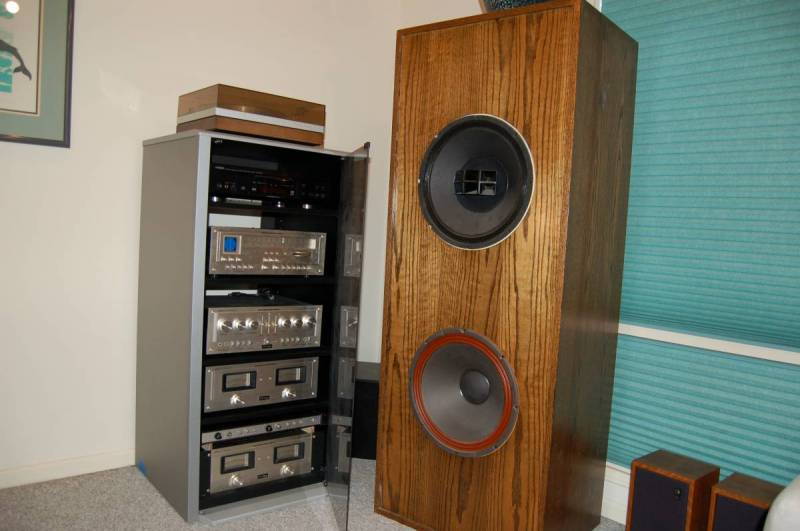 Of course 3-ways would be bigger than 2.5-ways which should obviously be bigger than 2-ways..., right???
Of course 3-ways would be bigger than 2.5-ways which should obviously be bigger than 2-ways..., right??? ![]()
These Super Big Red 2.5-ways are only 15.5 cu ft. Those are Chartwell LS3/5A 2-ways on the floor for comparison.
Which sounds better 2 way or 3 way speaker design
Seeking to purchase one of the following 3 speakers:
1. Proac K3-2 way design
2. Totem Element Metal V2-2 way design
3. Triangle Cello-3 way design
I am under the impression, (which I may be incorrect) that a three way design is superior to a 2 way design. All of the above speakers listed below retail for about $18,000 per pair. Am I correct to assume that a 3 way design will give the listener a much better chance to hear the full audio spectrum as opposed to a 2 way design?
Thank you.
Dear @kjl1065 : Everything the same 3-way is a superior MUSIC reproduction where a 2-way ( almost any. ) has a way higher Intermodulation Distortions that per sé goes against MUSIC in front of the 3-way design.
Regards and enjoy the MUSIC NOT DISTORTIONS, R. |
Depends on what you mean when you say, full audio spectrum. If full audio spectrum to you means more prominent low frequencies, than in my opinion I think you would have a better chance of achieving that with a 3-way design, though not necessarily a much better chance. As far as the speakers you have listed, the cello should have 3 db more low end output due to it having two dedicated low frequency drivers, at volume levels approximately 83 db or less (measured at 1K Hz) depending on the dynamic range of your source material and many other factors. But with any real world test, the proof is in the pudding, so the only way to really know is to do an actual listening comparison. |
See here a two way monitor with attributes of a three and four way design. Mike |
Implementation is everything. However, while designing a new speaker, choosing a 3-way may remove a number of constraints a similar 2-way would have, related to distortion and dispersion and dynamic range. I wrote more about this here. Having said all of that, trying to judge 2-way speaker A vs. 3-way speaker B is a fool’s errand. We can start to think about the benefits along the same lines of "why use 2 drivers instead of just one?" Similar benefits will appear when asking "why use 3 drivers instead of just 2?" It is of course possible to go overboard and design a multi-way monstrosity that sounds horrible. |